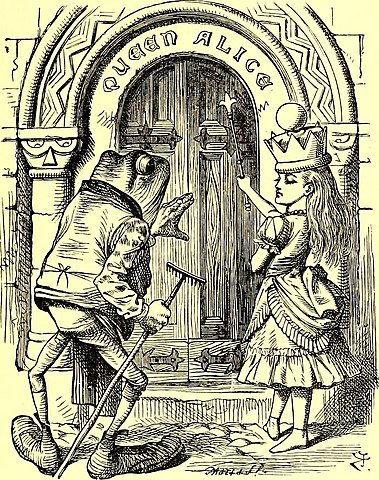(Part 1 of this review is here)
I assume readers have seen the film or know the plot. If not, take warning – there are SPOILERS ahead.
The climate movie Don’t Look Up has a lot to teach activists, in fact anyone concerned about our future. Here’s what I learned.
First, it’s been a resounding success, showing that people respond to the truth about climate and our political stalemate
The movie “recorded the biggest week of views in Netflix history with more than 152 million hours streamed.” (Film Updates).
Climate scientists were heartened by a movie that finally showed their frustration at getting the public to take climate change seriously.
A fierce pushback met the mainstream reviewers who missed the point. Much digital ink has been spilt discussing the film.
The more I think about the movie, the more lessons I find for communicating inconvenient truths. That’s not surprising since the co-originators of the story are David Sirota, one of our country’s best investigative journalists, and Adam McKay, the filmmaker responsible for comic blockbusters like The Big Short.
Here are the lessons I picked up from the movie. Add yours in the comments below.
Stick to a simple compelling message.
Communicating with the general public is different than talking with fellow activists or scientists. The movie wisely avoids long scientific explanations about climate change. In fact, the imminent catastrophe is not about climate change at all, but about something much simpler: a comet hurtling towards earth.
Doing so allows the film to focus on its real subject – our dysfunctional response to any threat. People trying to raise a warning will run into “… the massive, shifting system of careerism, profitization, politics and leveraged power,” according to director McKay.
A psychotherapist friend pointed out that when we confront such a system, we face a double bind, as first described by Gregory Bateson:
Unlike the usual no-win situation, the subject has difficulty in defining the exact nature of the paradoxical situation in which they are caught…. Double binds are often utilized as a form of control without open coercion—the use of confusion makes them difficult both to respond to and to resist.
There are two ways out of a double biind, according to my friend. Either one escapes (impossible in the case of climate change) or one can tell the truth.
Tell the truth firmly and directly
In the movie, senior astrophysicist Dr. Randall Mindy (Leonardo DiCaprio) is thrust blinking into the spotlight, trying to explain the threat to the President (Meryl Streep).
“Keep it simple. No math!” urges the experienced science bureaucrat, Dr. Oglethorpe (Rob Morgan).
But when Dr. Mindy finds himself in the Oval Office, he makes the classic mistake of too much detail. He babbles on to an impatient audience:
Approximately 36 hours ago, PhD candidate Kate Dibiasky here discovered a very large comet. A comet between 5 to 10 kilometers across. that we estimate came from the Oorts cloud, which is the outermost part of the solar system. And using Gauss’s method of orbital determination and the average astrometric uncertainty of 0.04 arcseconds …
Seeing the impatience of the President, Dr Oglethorpe cuts to the chase: “This comet is what we call a planet killer.”
Meanwhile young scientist Kate Dibiasky (Jennifer Lawrence) is squirming with impatience and incredulity. It doesn’t help that she’s being taunted by Jason Orlean (Jason Hill), the turd blossom chief of staff,
The whole scene (about 18:00 to 24:30) could be a training film for anyone aspiring to speak truth to power. It shows the three qualities we need to draw upon:
- Analysis – Dr. Mindy
- Fire – Kate Dibiasky
- Prudence – Dr. Oglethorpe
Similar flexibility is advised from another source:
I am sending you out like sheep among wolves. Therefore be as shrewd as snakes and as innocent as doves.
Keep your cool
Many of us can sympathize with Kate’s outbursts. How can the fools not realize what’s plain to see! The film shows what happens to people who give in to the temptation. They are marginalized and labelled crackpots.
At those times, we may want to call on our inner Dr. Oglethorpe, the Washington insider who speaks diplomatically and knows how far to push. He understands what motivates politicians and how to avoid self-righteousness.
Stay general
Dr. Mindy knows his stuff. He understands the astrophysics of comets, he has good scientific judgment, he is trusted. But when it comes to talking to regular people, he is a dork. Even if he is right (and he almost always is), he isn’t successful in getting across to others.
Again, Dr. Oglethorpe is a good guide. He expresses ideas succinctly, at the right moment, so that other people can digest them.
Pose a question. Don’t give pat answers
The movie itself demonstrates this lesson. It doesn’t go into details which would be death in an entertainment movie for a general audience. Its purpose is to get people’s attention. Later can come the documentaries, the analyses, the arguments about what to do.
It’s probably good that director McKay didn’t make climate the subject of the movies. As he himself admits, he doesn’t follow the subject closely. His solutions are dubious:
WE HAVE THE SCIENCE TO SOLVE THE CLIMATE CRISIS. Renewables, carbon removal and capture. It just needs to be scaled up & developed.
As most readers know, it’s going to take much more than that. Carbon capture is uncertain. Renewables have limits. We need to cut down on our consumption, renounce economic growth, kick the car habit. And that’s just the beginning.
Instead of offering his personal solutions, McKay wisely chose to get people thinking.
Use imagination and humor

Like so many issues, climate change has become a football in the Culture Wars. People are locked in their positions. To break the logjam, McKay took us to a world of make-believe: he decided to write a comedy:
“When it’s absurd, when it’s playful, it allows us to take in harder, more challenging truths,” McKay said. “One thing we can all agree on is that the world is frustrating and crazy, and that’s obviously what the astronomers in the movie encounter.” Few of us are climatologists, but we’ve all struggled to make sense of a civilization run by venal politicians and their corporate masters. “For a crowd to be laughing, there has to be some common ground,”.
Satire is a favorite strategy for people itching to say something unpopular to say – from Aristophanes arguing against war in Lysistrata (411 B.C.), up to 2006, with Mike Judge lambasting the dumbing down of America in Idiocracy.
Most of us aren’t going to write a satire, but perhaps we can loosen up a little – find opportunities for gentle humor and not take things so seriously all the time.
Have a generous spirit
I was struck by the lack of meanness in the film. Sure, certain types were parodied – the narcissistic President, the looney billionaire. But there wasn’t any nastiness about it. The characters were bursting with life. The actors who played them were delighted to go over the top.
The satire was bi-partisan. Those who think that President Orleans (Meryl Streep) was Trump would be surprised at the photograph of her hugging Bill Clinton shown on her desk at about 21:30. Director McKay said that the character was a combination of Trump, Bill Clinton, corporatist Democrats and George W. Bush.
He noted that the film has gotten raves from both Democrats and Trump supporters.
Even the heroes were shown as flawed. Dr. Mindy had a streak of vanity, leading him to be co-opted for government propaganda. The discoverer of the comet, Kate Dibiasky, needed an Anger Management class.
The only main characters who weren’t satirized were Dr. Oglethorpe and Yule (Timothée Chalamet), the wild kid who turns out to be evangelistic Christian. Those two form an axis of sanity around which the other characters revolve. Yule gave a moving prayer at about 2:00 without a trace of cynicism. Dr. Oglethorpe complimented him – “You’ve got some church game.”
Director McKay himself doesn’t see the problem as a few evil people. The problem is systemic. “Whenever the incentives get skewed, it can make large groups of people behave poorly … The elite “cultures have been befouled… It’s not about regular working people.” (online chat about 41:30))
Act with integrity
The last few minutes of the film took on a somber tone. The scientists have done all they could to stop the disaster and the comet is still on its way. In America we’re not comfortable with the idea that things end badly.
The film shows a couple making love, a shaman beating his drum, a man shooting his gun at the comet (“You’ll never take me alive!”)
The main characters sit around a dinner table. Dr. Mindy confesses his sins and is forgiven. People take turns telling what they’re grateful for. Kate Dibiasky says, “I’m grateful we tried.”
At the end, there are no macho heroics – just food, compassion and connection
Mark Rylance, the actor who played the tech billionaire, said:
“Something very strong is going to hit us, and it’s going to be crucial that we keep connection and we take great caution when anything is said to us that tries separate us from each other and from the trees and the plants and the planet we’re on” –
Expect attacks
The film shows us the need to gird one’s loins when entering the public arena. There will be attacks.
The easiest to prepare for are the obvious enemies – the fossil fuel companies and their minions.
Harder are the “tesponsible” entities – the politicians and journalists. Yes, they say, we are concerned about climate change. But as Roger Hallam of Extinction Rebellion pointed out, they aren’t emotionally engaged.
The movie showed the “responsible” newspaper (aka the New York Times) publishing a leak from the climate scientists, but then backing down when the government pushed back.
Poor Kate Dibiasky paraded through the media as a nutcase for losing her temper about the comet.
In the real world, reviewers in the mainstream media complained that the movie was “too shrill,” as if they were auditioning for roles in the sequel.
What to do now?
Even though the film doesn’t tell us what to do, we can make some suggestions. Climate scientist and activist Peter Kalmus: has a great list of ideas:
I’m often asked “What can I do about climate breakdown?”
1 Use your voice
2 Join together
3 Walk the talk
4 Engage politically
5 Take care of yourself
6 Get courageously creative
(See the thread under his Tweet for details.)
Selected reviews and interviews:
Why Sneering Critics Dislike Netflix’s ‘Don’t Look Up,’ But Climate Scientists Love It
David Vetter, Forbes
Global destruction isn’t funny, but when it comes to the climate crisis, it might have to be
Michael E. Mann, Boston Globe
Brian Cox Breaks Down The Science Behind Don’t Look Up – SPOILERS! |
Netflix (good explanation about comets and the accuracy of the film)
Against Subtlety: ‘Don’t Look Up’ Is the Movie for Our Moment
Ezra Brain , Left Voice
I’m a climate scientist. Don’t Look Up captures the madness I see every day
Peter Kalmus, Guardian
Interview with story co-originator David Sirota
Breaking Points
Live Chat: “Don’t Look Up” Director Adam McKay
David Sirota, Daily Poster
(subscribers only as of January 5; may be opened to public later)
Watching Don’t Look Up made me see my whole life of campaigning flash before me
George Monbiot, Guardian
Netflix’s ‘Don’t Look Up’ is the big asteroid of doom we deserve
Noah Berlatsky, NBC News
Adam McKay’s Don’t Look Up Captures the Stupidity of Our Political Era
Branko Marcetic, Jacobin
How do you make a movie about a hyperobject?
The film ‘Don’t Look Up’ turns climate change into an allegorical comet
Ben Goldfarb, High Country News
“Don’t Look Up” (review)
Gavin Schmidt, RealClimate
Scientists praise ‘Don’t Look Up’ as ‘evocative’ climate change parable
Yahoo News
Just a little too slow
Don’t Look Up and why journalism’s had such trouble with climate change
Bill McKibben
Do Look Up
Kevin D. Williamson, National Review (conservative)
Hollywood Can Take On Science Denial; Don’t Look Up Is a Great Example
Rebecca Oppenheimer, Scientific American

Image: ” The May 10 1556 Istanbul (Constantinople) earthquake. Hand colored woodcut. Private collection, Prague. Colored woodcut Depicting damage in Istanbul from the May 10 1556 earthquake. Hagia Sophia dome and other buildings were heavily damaged, with many fatalities. A comet was sighted on March 5, 1556 and seen for 12 days. (Colored woodcut, Printed by Herman Gall in Nuremberg, 1556)” via Wikimedia Commons https://commons.wikimedia.org/wiki/File:Istanbul_comet_and_earthquake_1556.jpg
Drawing: Through the looking glass, and what Alice found there (1899). John Tenniel via Wikimedia Commons https://commons.wikimedia.org/wiki/File:Through_the_looking_glass,_and_what_Alice_found_there_(1899)_(14762063996).jpg
Photo: Chancel window depicting ‘The Life’ at Holy Trinity Church Leicester, UK (2011). PJParkinson via Wikimedia Commons https://commons.wikimedia.org/wiki/File:ChancelWindowTruth.jpg





